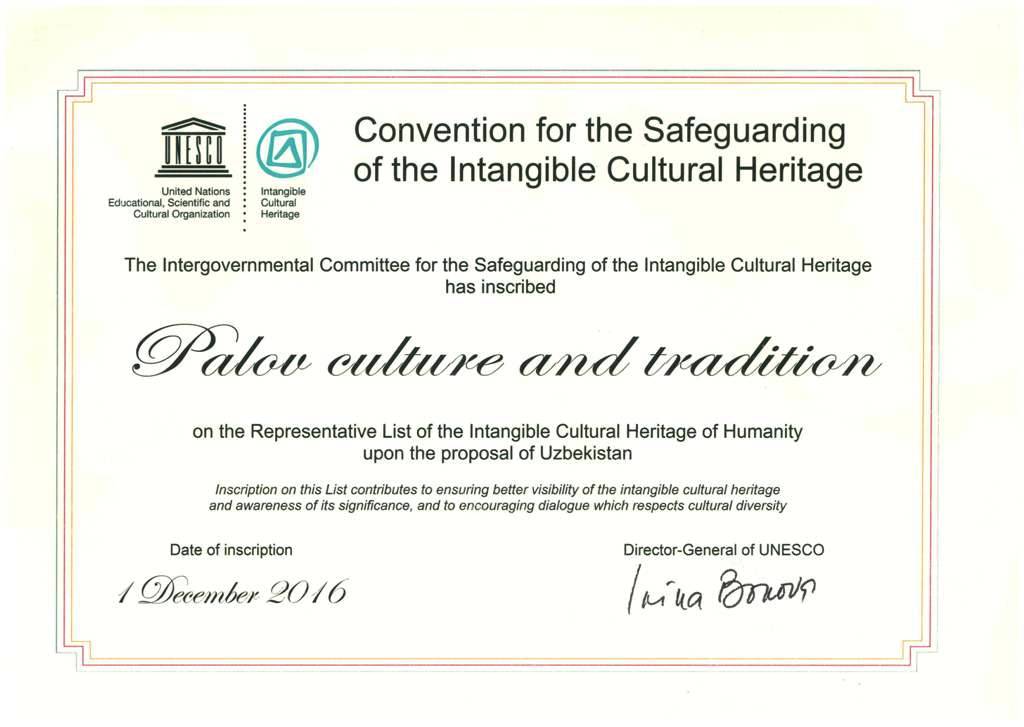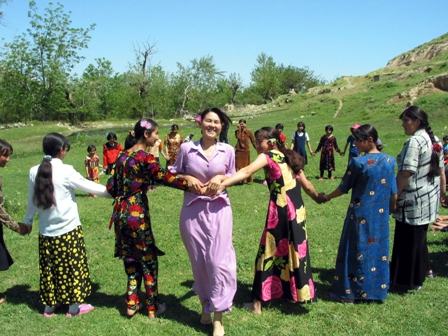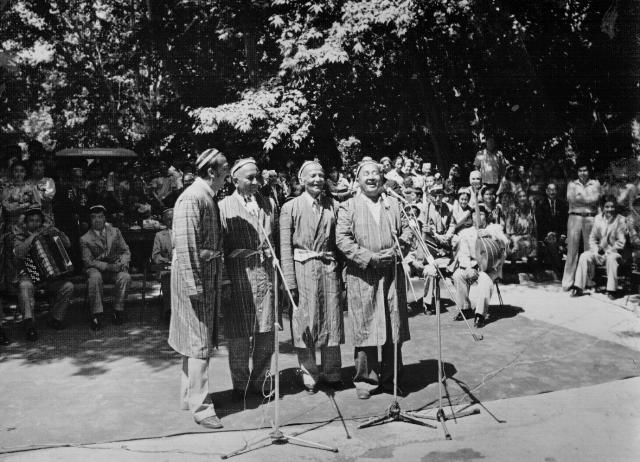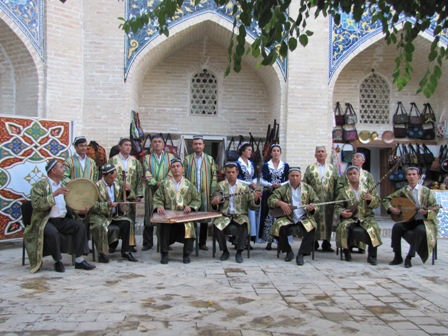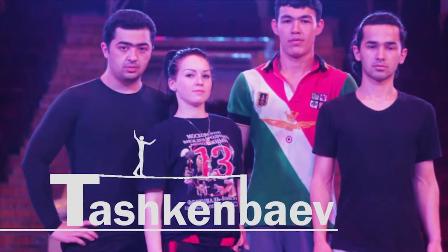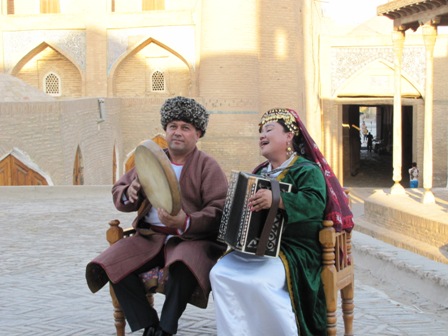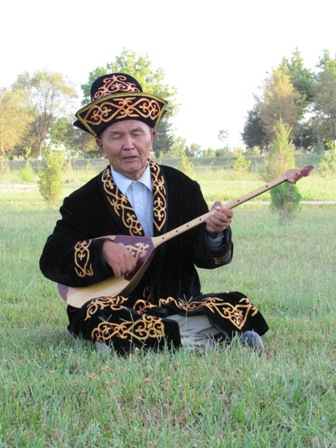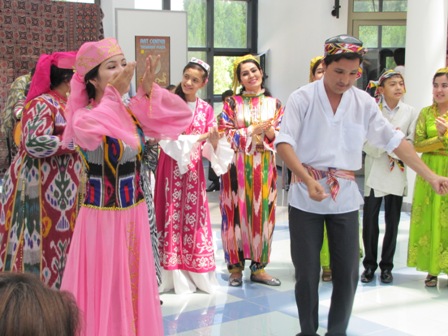Culture and Traditions associated with Palov
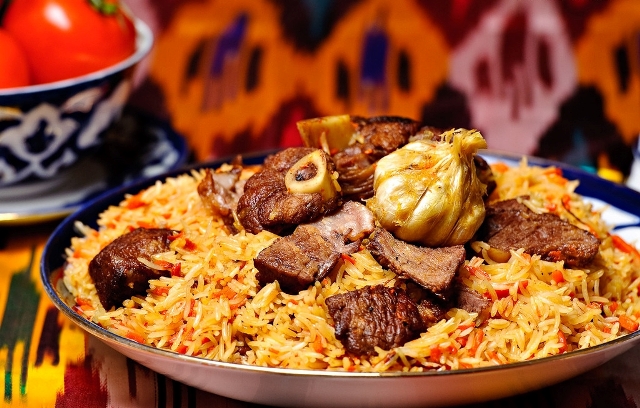
Palov (or osh) is the most beloved and highly regarded food among Uzbeks. It is spread in all regions of Uzbekistan. Palov accompanies Uzbeks throughout their lives.
Palov is prepared on different occasions. These are: on the occasion of the birth of the first child (aqiqa oshi); on the occasion of circumcision ceremony (sunnat toyi oshi); on the occasion of engagement ceremony (fotiha toyi oshi); on the occasion of seeing off a bride to the house of a groom (qiz oshi); in connection with wedding, for men only (nikoh oshi); in connection with wedding, for women only (khotin oshi); after wedding, only for friends of a groom (kuyov oshi); on the occasion of child's birth and carrying out "beshikka solish" ritual (beshik toyi oshi); on the occasion of commemoration of the deceased (ehson oshi); on the occasion of anniversary of death day (yil oshi).
Palov, with a lapse of time, turned into a kind of social phenomenon, which unites family (for example, each family at least once a week, i.e. on Thursdays, or even 2-3 times a week prepares palov; guests are never let go without eating palov), friends and colleagues (men's close friends or colleagues often form a group and regularly prepare palov in tea-houses (chaikhana); in a similar vein women gather and prepare palov), neighbors and relatives (in all family-related ceremonies and rituals palov is considered the main food). Palov is also prepared during celebration of national holidays (such as Memorial Day, etc.), folk promenades, hashars and on any other occasions, for which people gather.
As a rule, many people participate in palov preparation. And it is not the process of feasting itself, but the one associated with preparation or the one, which takes after it (when people communicate with each other), plays an important role in bringing people together.
As such, palov has the following social functions:
• it strengthens family;
• it encourages and supports relationships among friends and colleagues;
• it unites relatives;
• it ensures and helps to maintain friendly relations among neighbors;
• it nurtures the feeling of identity and belonging.
Palov, an element of intangible cultural heritage, is to be found across all five domains:
• Oral traditions and expressions (sayings, stories, legends, eposes, examples of oral folk art are usually used during communication, which takes place in the process of palov preparation, feasting and after it);
• Performing arts (during family-related rituals, national holidays and promenades it is possible to observe participation of ensembles of karnay and surnay; during palov feasts singers sing their songs and are accompanied by traditional ensembles);
• Social practices, rituals and festive events (during preparation and feasting it is possible to observe many rituals);
• Knowledge and practices concerning nature and the universe (the process itself and the technology of preparation demonstrate a strong connection between human and nature; in other words human can prepare his desired food with a help of fire);
• Traditional craftsmanship (while preparing and offering palov the items of traditional craftsmanship are widely used).
As a rule, palov is prepared by women in families. In contrast, those, which are supposed to be offered to a significant number of guests, are prepared by men. In some regions of Uzbekistan, women and men take part in common feasts separately. This is due to the national mentality. And in many familes, both girls and boys are taught the secrets of preparing palov from an early eage. Despite all these features, all segments of the population love palov and are happy to participate in the events, celebrations and rituals, where palov is offered.
At present the following measures are undertaken in order to preserve palov and the traditions associated with it:
• An association of cooks was established;
• Books and recipes are published recommending the methods of preparation of palov;
• Mass media cover cooks' activities;
• International as well as national competitions on preparation of palov are conducted;
• A competition entitled "Oshga marhamat" ("Come and have palov with us") is organized, which is broadcaster over TV;
• New buildings ("toykhona") are constructed, where family festivities are held;
• In constructing "mahalla guzars" (i.e. the places, where people from local community can organize festive events) halls are constructed, which are designed for holding large-scale festive events;
• "Osh markazlari" ("Centers of palov") are opened which serve as the places of public catering;
• Skillful cooks are trained based on "ustoz-shogird" ("master-apprentice") traditional methodology of learning;
• Breeding works are carried out in order to identify suitable varieties of rice (for example, "Lazer", "Devzira", "Avant-guard", "Nukus", etc.);
• Certain works are carried out to improve the quality of palov ingredient;
• Traditional craftsmen produce diverse kitchen utensils, vessels and other types of dishes.





